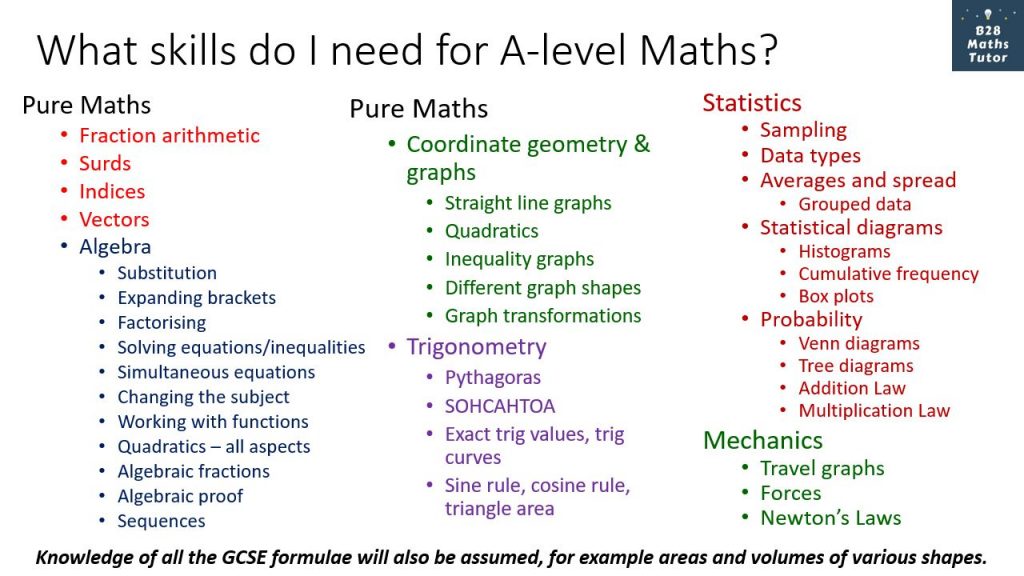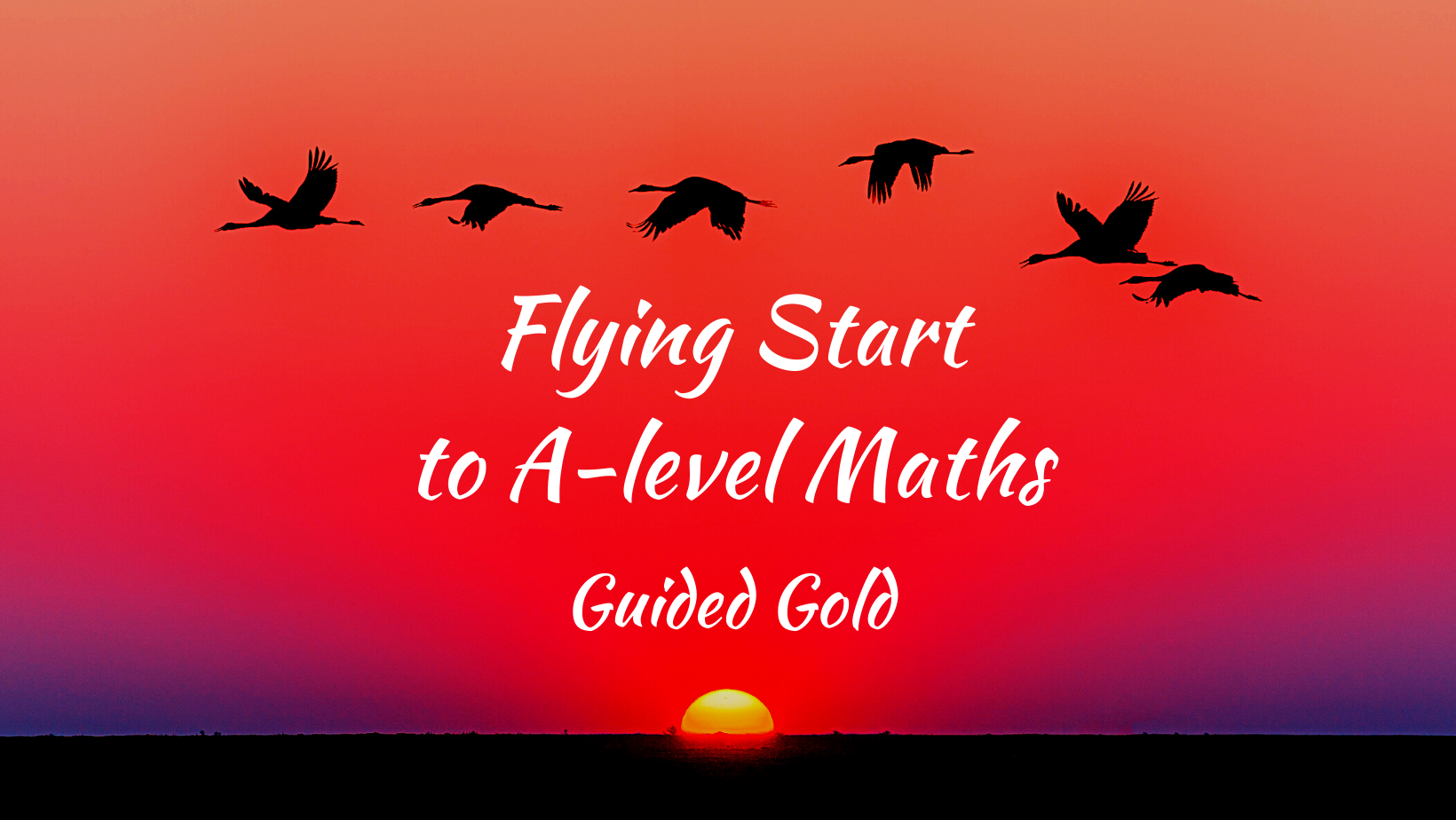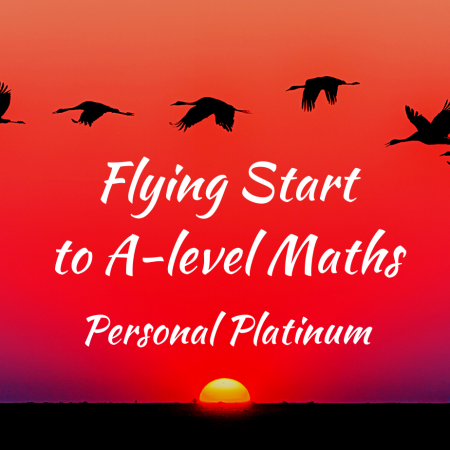Note: This programme runs from 7th June to 16th August 2021. All the live sessions are recorded, so it’s not too late to join – you can still catch up, but don’t leave it too long!
Click HERE to view the FREE WEBINAR that took place on 30th May – includes a lesson on indices!
Are you planning on starting the A-level Maths course this year?
As anyone who’s done the A-level Maths course will tell you, it’s pretty intense right from Day One.
If you can make sure that you’re fully up to speed on the aspects of GCSE Maths that the A-level builds on, then you’re going to find the transition from GCSE to A-level Maths much easier .
That’s where the “Flying Start to A-level Maths” (FSALM) course can help you.
With this comprehensive course, you can bridge the gap between what you’ve actually covered in school and what you’re going to need for the A-level.
There are three versions of this course: Self-paced Silver, Guided Gold (this version) and Personal Platinum.
Take a look at the course collection page for an overview of all three.
What’s different about Guided Gold?
With Guided Gold you get:
- A 10-week programme running from early June until mid-August, for those who are starting the A-level course in September
- Ideal for anyone who finds it difficult to stay on track when studying independently
- 2-4 lessons set per week from the online course – typically equating to about 3-4 hours’ study time
- A weekly LIVE recap where your questions will be answered
- Live sessions recorded and made available for catch-up purposes

What’s in the course?
Written and delivered by a qualified teacher with well over 15 years’ experience of teaching Maths at GCSE and A-level, the course is suitable for all exam boards.
It looks at just the relevant parts of the GCSE (including a few bits that you’ll have done in Science rather than Maths) that you’re going to need for the A-level.
On all three versions you get:
- Over 10 hours of specially-recorded videos
- none of the drawbacks of live webinars
- work through at your own pace
- lots of opportunities to practise skills
- rewind and repeat as many times as you like
- Practice questions with full worked solutions and other supporting resources
- A free Facebook group where you can get help with anything you’re still struggling with
- A completion certificate when you finish the course
- A no-quibble money-back guarantee
- Links to recommended free sources of additional practice
- A subscription that doesn’t expire – so you can revisit the course at any time.
These are the topics covered:

How should I use the course?
In this version, the course is drip-fed, so each lesson will be made available in the week when it’s set. Click on the Curriculum tab above (if you’re on mobile then it’s the middle one, with the little block icon) to see the course structure. Once you’re enrolled, if you click on one of the lessons – and it’s available – then you’ll be taken into that lesson.
(The drip feed is negotiable; if the majority of participants would prefer to have the full course available to them straight away then that can be arranged.)
The live sessions will be at 7.30pm on Monday nights, from 7th June until 16th August inclusive, and I’ll use these to recap on the previous week’s topics and answer any questions that have been submitted in relation to those lessons, and then to set work for the following week. Questions can be submitted – preferably by the Sunday evening – via the Facebook group or by email.
Recordings of the live sessions will be posted inside the course for catch-up purposes, so don’t worry if you can’t make the live slot. All the live recordings will be left up until at least Christmas, and you will continue to be able to access the rest of the course indefinitely.
In each lesson, work through the video, pausing when prompted to work out answers to the questions. In some cases there are accompanying handouts available for download.
After completing each video lesson, take a break from that topic for a day or two. After that, work through the relevant practice questions and then check your working against the model solutions. If you get stuck then try to only reveal a little of the solution at a time, and see if you can get a bit further on your own before revealing the next bit.
Try, if you can, to revisit each topic after a few days and then again after 3-4 weeks, in between studying other topics. You can do this by re-doing the relevant worksheet, or by seeking out Higher GCSE questions on the same topic and doing those. This is called interleaving and really helps you to remember the content.
If you find the course helpful then please consider leaving a positive review (there’s a Reviews tab alongside the course Overview and Curriculum tabs) – and please bring it to the attention of anyone else you know who might benefit!
Social sharing buttons are available below, if you’d like to use them.
Course Features
- Lectures 34
- Quizzes 0
- Duration 30-50 hours
- Skill level All levels
- Language English
- Students 9
- Certificate Yes
- Assessments Yes
-
Course introduction and live recordings
-
Part 1: Pure Maths: Fractions, surds, indices and vectors
-
Part 2: Pure Maths: Algebra
-
Part 3: Pure Maths: Coordinate geometry and graphs
This is really an extension of the algebra work.
-
Part 4: Pure Maths: Trigonometry
-
Part 5: Statistics: Data handling
-
Part 6: Statistics: Probability
-
Part 7: Mechanics






